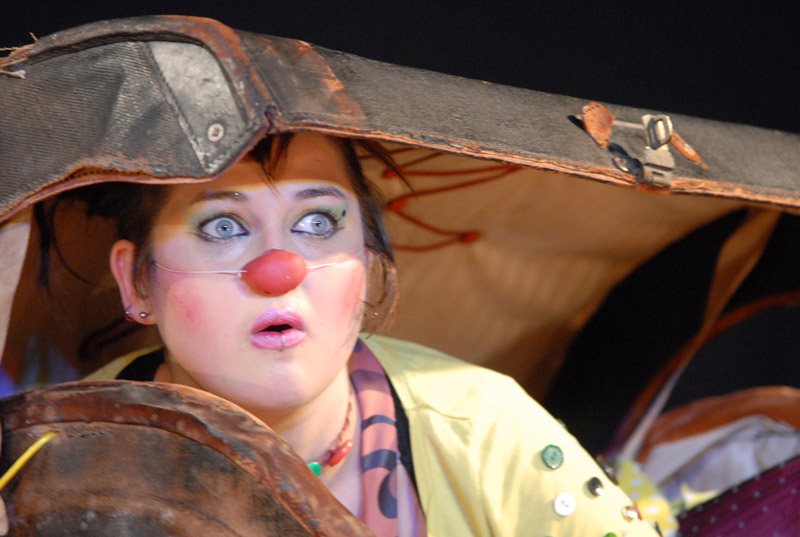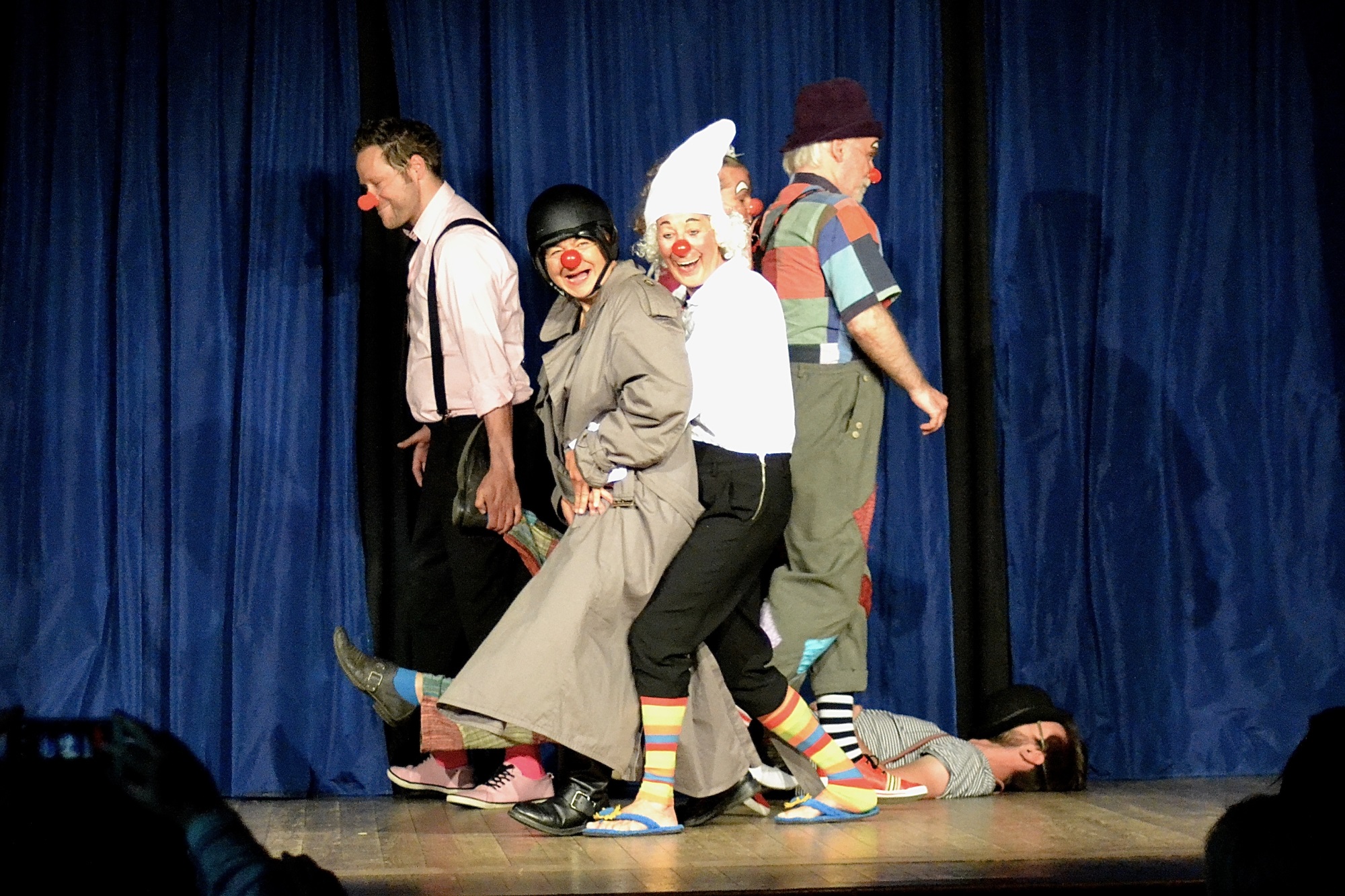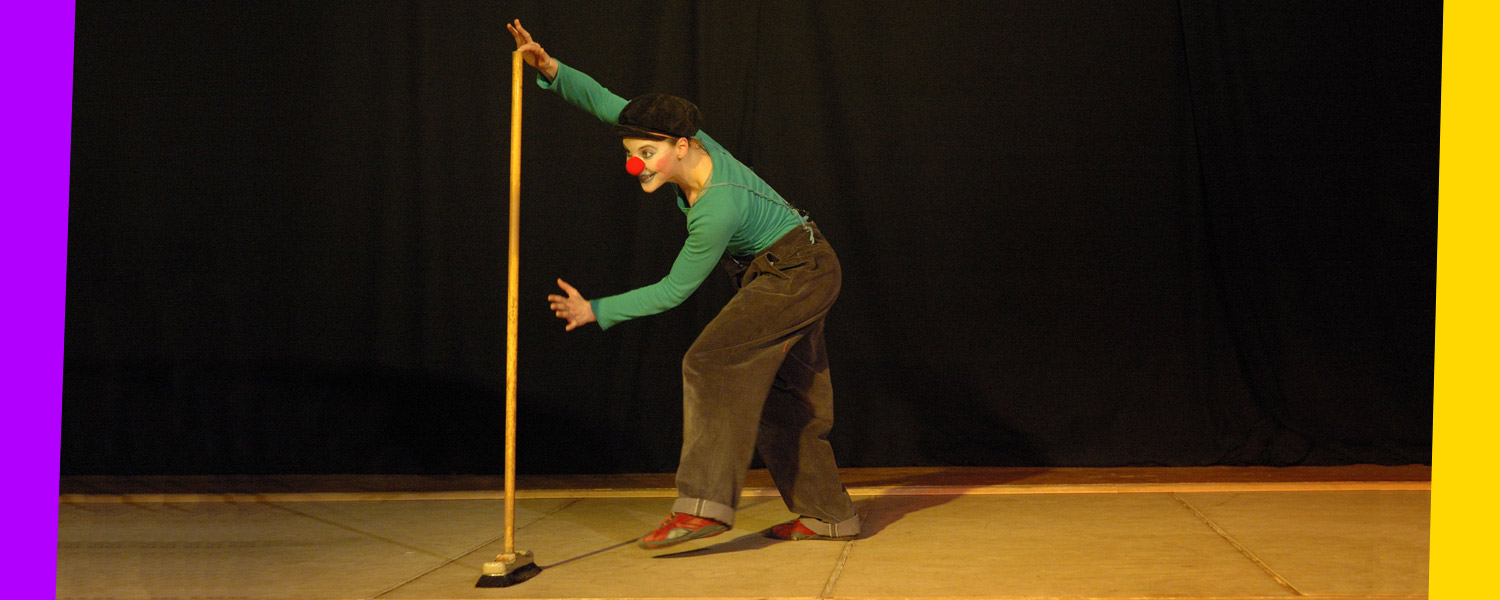The 1st Room of Laughter
Playing with the Red Nose. - A new world emerges. - Simply follow your nose. - The game is based on imitation, and the world around us becomes a twin.
When the clown opens his eyes for the very first time, his gaze first falls on himself. The "outside" doesn't yet play a role. He follows the rhythm of his breathing and the movements of his body. He discovers the world, and the world is himself. The Red Nose is fascinated by what "hangs on it." A body, a play space full of immeasurable possibilities.
The joy of playing unfolds with the discovery of one's own body. The perceptions, sensations, and feelings that result from it. Every movement, every gesture, and every step become a game, a trick, and a dance.
As he then moves around the room and discovers things around him, he experiences everything as a part of himself and himself as a part of the world around him. His method is imitation. With each encounter, his world expands and he grows through the variety of impulses he absorbs, imitates and duplicates.

I like it!
With each encounter, playful self-confidence, the joy of playing, and the ability to enjoy oneself grow.
Every new playful way of discovering oneself in the world is commented on with the feeling: "I like it!"
It doesn't matter how artistic his performances are. The clown doesn't convince with his skill, but with his "being."
On the contrary, the simpler his acting is, the more his audience wants to do the same.
- They say: "I can do that too!" and the clown replies: "You can do exactly that too!" and just like that, he has a play partner, and we become the clown's twin.

In the first space of laughter, the clown's acting supports confidence in our own expression. On this level, the clown reminds us of the joy present in each of us, of fun as motivation and driving force for our self-expression.
Keywords
Stabilization - Centering - Self-contact - Self-awareness - Self-confidence - Self-expression - Developing body awareness - Presence - Taking up space - Making others witness, not convincing - Contact and security through imitation - Reinforcing through doubling - Being open to impulses - Showing concrete and clear impulses - Showing joy in oneself - Intention and direction - Making statements and not asking questions - Feeling oneself - Focusing oneself - What moves within me - How can I move what moves me - Being authentic - Being courageous.
It's about not being lost in thoughts, but rather directing one's thoughts to what you feel and what you are doing

